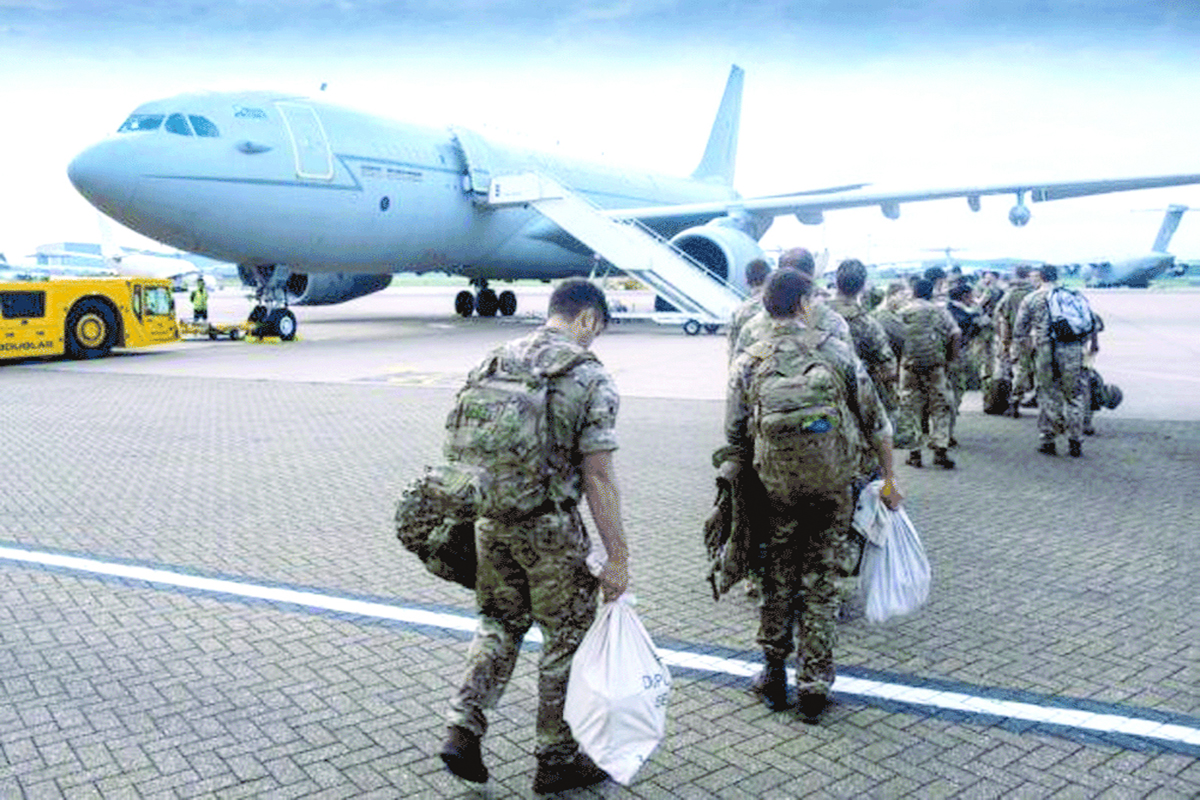The final American military flight out of Hamid Karzai International Airport took off a day before the scheduled Aug 31 deadline, symbolically ending what has been described as the United States’ longest war. The triumphant Taliban aimed their weapons skywards and let loose a volley of gunfire, celebrating their return to supremacy in Kabul.
It’s as difficult to join the celebrations this week as it was almost 20 years ago, when the Taliban more or less folded in the face of a US-led invasion they saw little point in resisting.
Back then, it was gratifying to witness the demise of the atrocious Taliban regime — albeit without entertaining any florid fantasies about what lay in store. This time around, it’s the belated comeuppance of the occupiers that’s satisfying to behold, notwithstanding the absence of any illusions about what the future holds for Afghanistan.
The last week of the accelerated exodus has been profoundly traumatic in several respects, particularly the suicide bombing on the airport’s periphery, claimed by militant Islamic State group’s Khorasan chapter, which cost at least 170 Afghan lives and killed 13 US military personnel last Thursday. Some of the fatal wounds were inflicted by bullets, although it’s unclear who fired them.
The terrorist attack was preceded by the horrifying sight of desperate Afghans falling to their deaths from the undercarriage of an American military transport plane, and followed by a US drone strike in Kabul that killed 10 members of a family.
Almost 117,000 Afghans who feared for their future were flown out of Kabul last month. Thousands more were left behind. Amid some hesitation, around 100 countries have agreed to accept refugees, and the Taliban have indicated they might allow the exodus to continue. Their political leadership has also vowed there will be no reprisals against those perceived as collaborators.
Given their track record, there is understandable scepticism about the Taliban’s assurances on this score, as well as in respect of women’s rights to education and employment. It should become clear before too long how that is working out.
Even if the Taliban leadership has resiled from the brutal absurdities of its earlier tenure, the proclivities of its foot soldiers remain indeterminate, as does the success of its efforts against IS and the potential threat represented by the residual Northern Alliance and its collaborators in the Panjshir Valley.
A Taliban-led government is yet to formally replace the fragile puppet regime of Ashraf Ghani, and the pieces are yet to fall into place on the regional chessboard. Moves by the dominant regional players — from China and Russia to Turkey and, not least, Pakistan — are likely to prove crucial. Besides, the supposedly evolved Taliban’s national governance abilities remain untested. Yes, they’ve been there before. But they made an utter mess of it the first time around.
Something similar could have been claimed about the US in 2001. Outside the region, too many people tend to forget that the Americans’ first military foray into Afghanistan came a couple of decades earlier, when the initial intention to lure Soviet forces into Afghanistan was, once successful, followed by the determination to give them a bloody nose — by encouraging, training, arming and funding the fundamentalist forces that eventually spawned both Al Qaeda and the Taliban.
An Al Qaeda offshoot eventually transmogrified into IS. The Khorasan chapter is believed to draw its strength from disaffected Afghan and Pakistani Taliban. The latter is also reportedly linked to the Haqqani network, evidently a core component of the Taliban 2.0 as well as a confidant of the Pakistani security state. And the latter owes its prominence in part to its key role as a conduit for the CIA’s supposedly clandestine Afghan operation throughout the 1980s.
Ultimately, it is this part of the American legacy that will resonate for much longer than the false hope fed to a generation of often idealistic young Afghans, while propping up a hopelessly corrupt edifice in Kabul. It’s well worth noting, though, that the level of corruption among the Afghan elite (including the two presidential families) fades into insignificance in comparison with the profits of US corporations.
Precious little of the couple of trillion dollars purportedly spent on Afghanistan trickled down to Afghans. Much of it apparently found its way into the coffers of Raytheon, Boeing, Lockheed Martin, Northrop Grumman, General Dynamics, Halliburton and the like.
Perhaps above all this conflict serves as a reminder of what the prodigiously decorated US major-general Smedley Butler poignantly, and accurately, pointed out in 1935: “War is a racket. It always has been. It is possibly the oldest, easily the most profitable, surely the most vicious … It is the only one in which the profits are reckoned in dollars and the losses in lives.”
Advertisement











